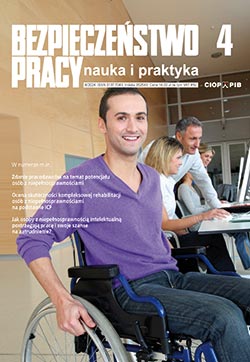Microwave ovens – to control emissions and exposure to electromagnetic fields
Magda Mariańska, Halina Aniołczyk, Paweł Mamrot
Microwave ovens can potentially emit electromagnetic fields (EMF) at levels affecting the safety and health of people employed in catering and authorized service centres. Theoretically, the manufacturer should guarantee that microwave ovens are safe; devices on the market should comply with emission standards. The levels of EMF in the vicinity of over 170 devices, presented in this article, indicate that appropriate protective measures are necessary. Current regulations on emission limits, which manufacturers of microwave ovens should comply with, are based on ICNIRP recommendations and meet human exposure limits for EMF. The regulations in Poland are more restrictive. This article discusses all those aspects, particularly in relation to staff in catering and in service centres, where there is no effective supervision of the working conditions. The ability to ensure safe household use of microwave ovens is considered, too.
Lifestyle and pro-health behaviors of Polish construction workers – original research results
Marzena Malińska
Life style is important in both improving and maintaining good health. The main goal of the article is to show selected elements of life style (i.e., self-evaluation of health, eating habits, smoking, drinking, drug use and physical activity) of male construction workers depending on their age. The analysis is based on the results of research conducted in 2014-2015 among 600 men employed in the construction industry in Poland. Their life style was evaluated with a questionnaire developed specifically for this study, whereas their physical activity was evaluated with the International Physical Activity Questionnaire (IPAQ). Age was a statistically significant factor differentiating some elements of the participants’ life style. Employees aged 50+ considered their health to be significantly worse, made more dietary mistakes and smoked more cigarettes per day than any other group. On the other hand, 30–32-year-olds drank alcohol more frequently and in larger quantities than the other age groups, whereas 20–22-year-olds drank less strong spirits and were more likely to use drugs.
Personal security of policemen during the ID check
Martyna Ostrowska
Identification (ID) checks are a primary activity of police officers. ID checks are essential in identifying and arresting perpetrators or disclosing violations of law. Although seemingly simple and safe, police officers should not underestimate them. Their life and health may be at risk. For this reason, it is very important to focus on safety issues faced by police officers on duty. This article discusses personal safety of police officers during ID checks.
Monitoring of emotional states of worker using Brain – Computer Interfaces
Karolina Trzyniec
Brain–Computer Interface (BCI) is a system in which commands are transferred to a computer by signals generated in the brain. BCI may be based on ECoG signals (electrocortiogram), MEG signals (magnetoencephalography), PET signals (positron emission tomography), fMRI signals (functional magnetic resonance), NIRS signals (optical imaging) or others. Most commonly, BCI is based on EEG signals. Among the most common BCI applications are touchless controlling of electronic devices, touchless computer operating (including touchless Internet searching), biometric user authentication and process controlling by people with reduced mobility. This article presents the concept of using the brain–computer interface, which uses EEG signals to monitor selected emotional states of a worker, such as mental engagement, thought, frustration, excitement. The concept is based on the use of a neurohelmet, which uses simplified electroencephalography.




























